strike
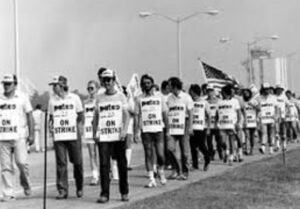 There are some jobs from which people really cannot strike. To many lives are at stake. One such job is that of air-traffic controllers, nevertheless, on August 3, 1981, almost 13,000 air-traffic controllers went on strike after negotiations with the federal government designed to raise air-traffic controller pay and shorten their workweek failed. In the complaint, the controllers sited difficult working conditions and a lack of recognition of the pressures they face as major issues they were facing. When the strike began, some 7,000 flights across the country, had to be canceled. It was a major disaster in the United States. Air travel was a vital part of American life.
There are some jobs from which people really cannot strike. To many lives are at stake. One such job is that of air-traffic controllers, nevertheless, on August 3, 1981, almost 13,000 air-traffic controllers went on strike after negotiations with the federal government designed to raise air-traffic controller pay and shorten their workweek failed. In the complaint, the controllers sited difficult working conditions and a lack of recognition of the pressures they face as major issues they were facing. When the strike began, some 7,000 flights across the country, had to be canceled. It was a major disaster in the United States. Air travel was a vital part of American life.
President Reagan immediately called the strike illegal and stated that he 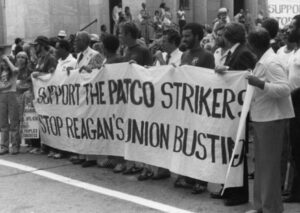 would fire any controller who had not returned to work within 48 hours. Robert Poli who was the president of the Professional Air-Traffic Controllers Association (PATCO) at that time, was found in contempt by a federal judge and ordered to pay $1,000 a day in fines. The air-traffic controllers still had not returned to work on August 5, 1981, so President Ronald Reagan began firing 11,359 air-traffic controllers striking in violation of his order for them to return to work. The executive action was regarded as extreme by many and significantly slowed air travel for months. Nevertheless, President Reagan did what he needed to do. There are certain occupations that require continued, loyal work, even during a dispute.
would fire any controller who had not returned to work within 48 hours. Robert Poli who was the president of the Professional Air-Traffic Controllers Association (PATCO) at that time, was found in contempt by a federal judge and ordered to pay $1,000 a day in fines. The air-traffic controllers still had not returned to work on August 5, 1981, so President Ronald Reagan began firing 11,359 air-traffic controllers striking in violation of his order for them to return to work. The executive action was regarded as extreme by many and significantly slowed air travel for months. Nevertheless, President Reagan did what he needed to do. There are certain occupations that require continued, loyal work, even during a dispute.
.
An angry President Reagan carried out his threat that August day, and the federal government began firing the 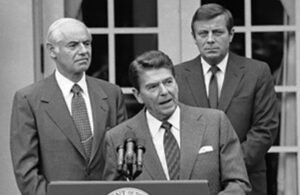 11,359 air-traffic controllers who had not returned to work. In addition, he declared a lifetime ban on the rehiring of the strikers by the Federal Aviation Administration (FAA). They made their choice and our president made good on the repercussions, and they got no second changes. Air travel slowed to a crawl, but on August 17, the FAA began accepting applications for new air-traffic controllers, and on October 22 the Federal Labor Relations Authority decertified PATCO. These new air-traffic controllers needed to know just how important their job was and that even in a dispute, they went to work. To my knowledge, a strike of the air-traffic controllers has never happened again.
11,359 air-traffic controllers who had not returned to work. In addition, he declared a lifetime ban on the rehiring of the strikers by the Federal Aviation Administration (FAA). They made their choice and our president made good on the repercussions, and they got no second changes. Air travel slowed to a crawl, but on August 17, the FAA began accepting applications for new air-traffic controllers, and on October 22 the Federal Labor Relations Authority decertified PATCO. These new air-traffic controllers needed to know just how important their job was and that even in a dispute, they went to work. To my knowledge, a strike of the air-traffic controllers has never happened again.
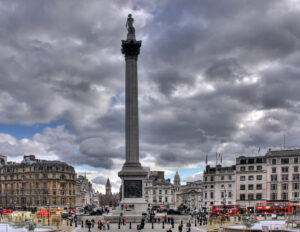 Protests are a common story these days, and the police are often kept busy for days trying to keep some kind of order. Not much has really changed in that arena. No nation is exempt from the possibility of violence breaking out because people feel they have been subjected to injustice…whether the facts bear out the belief or not. In 1926, miners across the United Kingdom went on strike. They were being subjected to an involuntary 13% wage cut, as well as an increase in weekly labor, and they were not planning to put up with it. When workers in other industries refused to work in solidarity with the striking miners, it led to a general strike. The work stoppage lasted nine days.
Protests are a common story these days, and the police are often kept busy for days trying to keep some kind of order. Not much has really changed in that arena. No nation is exempt from the possibility of violence breaking out because people feel they have been subjected to injustice…whether the facts bear out the belief or not. In 1926, miners across the United Kingdom went on strike. They were being subjected to an involuntary 13% wage cut, as well as an increase in weekly labor, and they were not planning to put up with it. When workers in other industries refused to work in solidarity with the striking miners, it led to a general strike. The work stoppage lasted nine days.
1926 was an unsettled year, with protests becoming quite common, especially  in London’s Trafalgar Square. As a result of the violence, the police wanted to set up a temporary police station, so they could keep an eye on things. The public would have none of it. Their outcry literally caused the police to drop the project. The problem, however, remained, so they knew that something had to be done. Finally, someone came up with a brilliant idea. That year, they built several large ornate light posts. One of the light posts was configured with the idea of housing what is most likely the world’s tiniest police station. This brilliant idea allowed the police to hide it, and their surveillance, in plain sight.
in London’s Trafalgar Square. As a result of the violence, the police wanted to set up a temporary police station, so they could keep an eye on things. The public would have none of it. Their outcry literally caused the police to drop the project. The problem, however, remained, so they knew that something had to be done. Finally, someone came up with a brilliant idea. That year, they built several large ornate light posts. One of the light posts was configured with the idea of housing what is most likely the world’s tiniest police station. This brilliant idea allowed the police to hide it, and their surveillance, in plain sight.
The police station pole was located inconspicuously at the south-east corner of Trafalgar Square. It is a rather 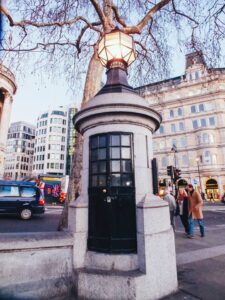 peculiar and often overlooked world record holder…Britain’s Smallest Police Station. Apparently this tiny box can accommodate up to two prisoners at a time, although its main purpose was to hold a single police officer. I guess you could say that it was a 1920’s version of the ring doorbell camera. It didn’t take video, but the officer inside could clearly watch the square. Once the light fitting was hollowed out, the builders installed a set of narrow windows in order to provide a vista across the main square. Also installed was a direct phone line back to Scotland Yard in case reinforcements were needed in times of trouble. In fact, whenever the police phone was picked up, the ornamental light fitting at the top of the box started to flash, alerting any nearby officers on duty that trouble was near. It was a brilliant idea, but as with all inventions, their usefulness lasts only until the next big thing comes along. Such was the case with the Trafalgar Square Light Pole Police Station. Eventually new technology made the little station obsolete. Today the pole is used for custodial storage.
peculiar and often overlooked world record holder…Britain’s Smallest Police Station. Apparently this tiny box can accommodate up to two prisoners at a time, although its main purpose was to hold a single police officer. I guess you could say that it was a 1920’s version of the ring doorbell camera. It didn’t take video, but the officer inside could clearly watch the square. Once the light fitting was hollowed out, the builders installed a set of narrow windows in order to provide a vista across the main square. Also installed was a direct phone line back to Scotland Yard in case reinforcements were needed in times of trouble. In fact, whenever the police phone was picked up, the ornamental light fitting at the top of the box started to flash, alerting any nearby officers on duty that trouble was near. It was a brilliant idea, but as with all inventions, their usefulness lasts only until the next big thing comes along. Such was the case with the Trafalgar Square Light Pole Police Station. Eventually new technology made the little station obsolete. Today the pole is used for custodial storage.
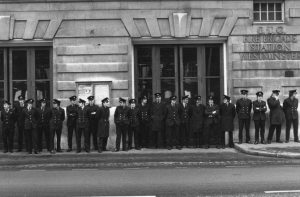 When we think of emergency personnel, we think of people who willingly put their lives on the line for others, and that is a good analogy, but while these people are passionate about their career, it is still a career. They expect, and need to be paid accordingly. Their job is dangerous, and they risk their lives every day, to go out and save other people. Unfortunately, they have to make a living too. For firefighters in England in 1977, the living they were making, wasn’t enough to support their families. So, as often happens, when the pay doesn’t equal the risk, the firefighters went on strike. They were demanding a 30% raise in pay.
When we think of emergency personnel, we think of people who willingly put their lives on the line for others, and that is a good analogy, but while these people are passionate about their career, it is still a career. They expect, and need to be paid accordingly. Their job is dangerous, and they risk their lives every day, to go out and save other people. Unfortunately, they have to make a living too. For firefighters in England in 1977, the living they were making, wasn’t enough to support their families. So, as often happens, when the pay doesn’t equal the risk, the firefighters went on strike. They were demanding a 30% raise in pay.
As the strike began, the 30,000 strong Fire Brigades Union claimed that 97.5% of its members had heeded the strike call and were no longer manning the pumps. It doesn’t take much imagination to realize that without firefighters, the cities were in serious trouble. Talks continued between union leaders and employers, but it didn’t look like there would be an early resolution, because the government insisted there was no breach of its 10% public sector pay ceiling.
As the situation became more critical, troops were brought in to provide emergency coverage of the cities. There was still concern among the soldiers about their lack of training and modern firefighting equipment. They would do their jobs, but that didn’t mean that they would know how to do it well. The reality is that firefighting is a highly skilled job, in which the people are trained, and they know the risks.
The firefighters said that they had already waited two years for the Government to consider their pay claim…and they were done waiting. During that two years, the police department had received a substantial pay rise while firefighters, in line with many others, had to settle for £6 per week. Much of the discussion between the union and employers is focused on the possibility of a reduction in the 48-hour working week, which would allow officers to earn considerable overtime payments.
In many areas firefighters have deserted their stations only reluctantly. Firemen, still wearing their uniforms and pickets armbands, rushed to the scene of a fire at St Andrew’s Hospital in Bow, East London, after a basement storeroom caught light. One of the officers said: “We couldn’t let them die.” And, “It was a hospital, what else could we do but come and help?” A colleague Barry Holmes said: “The situation here was really dangerous and people could have died if we had not come.” Emergency troops arrived at the scene first, and fire officers said afterwards that without their help the building would have burned to the ground.
“Elsewhere in the country, troops averted a major catastrophe on Merseyside when they stopped a haulage depot blaze at Kirkdale spreading to a 500 gallon gasoline storage tank. A woman and her twin sons escaped from a bungalow at Wallington in Surrey after a gas container exploded starting a fire. Troops in a Green Goddess had to drive 25 minutes from Croydon and the house was destroyed. The local fire station was less than three minutes drive away.” The striking firefighters received no strike pay, but got donations from the 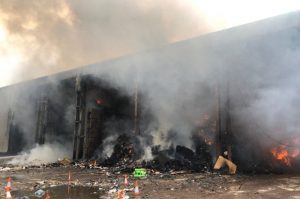 public as Christmas approached. The insurance companies picked up the final bill for the dispute with payouts totaling £117.5m compared with £52.3m for the same three months the previous year. The firefighters eventually settled for a 10% increase, taking an average salary to just over £4,000, with the promise of more to come.
public as Christmas approached. The insurance companies picked up the final bill for the dispute with payouts totaling £117.5m compared with £52.3m for the same three months the previous year. The firefighters eventually settled for a 10% increase, taking an average salary to just over £4,000, with the promise of more to come.
Firefighters went on strike again in 2002/2003, in a long-running dispute which included a series of one day strikes over a period of several months. They finally ended with a 16% pay raise that was tied to a modernization package. The Fire Brigades Union chief, Andy Gilchrist said at the time of the settlement it was “a first phase” towards raising a fire officer’s basic pay to £30,000. I say, it was about time.
 During World War I, Britain, like the United States would have to do in World War II, had to employ large numbers of women into jobs vacated by men who had gone to fight in the war. They also had to create new jobs as part of the war effort. As an example, women were hired in munitions factories. The high demand for weapons resulted in the munitions factories becoming the largest single employer of women during 1918. It was a job that many people resisted, mainly because it was seen as “men’s work.” When I think about the work these women were doing, I find myself much more concerned with the toxicity and danger of the materials they were working with, than whether or not the job should be done by a man. Of course, the materials would present the same danger to the men, but the men had always felt like the dangerous work should fall to them.
During World War I, Britain, like the United States would have to do in World War II, had to employ large numbers of women into jobs vacated by men who had gone to fight in the war. They also had to create new jobs as part of the war effort. As an example, women were hired in munitions factories. The high demand for weapons resulted in the munitions factories becoming the largest single employer of women during 1918. It was a job that many people resisted, mainly because it was seen as “men’s work.” When I think about the work these women were doing, I find myself much more concerned with the toxicity and danger of the materials they were working with, than whether or not the job should be done by a man. Of course, the materials would present the same danger to the men, but the men had always felt like the dangerous work should fall to them.
Nevertheless, with the introduction of conscription in 1916 everything changed. Conscription refers to the process of automatically calling up men and women for military service. During the First World War men (it only applied to men at this time) who were conscripted into the armed forces had no choice but to go and fight, even if they did not want to. Around 1916, with the need becoming serious, the government began  coordinating the employment of women through campaigns and recruitment drives. This led to women working in areas of work that were formerly reserved for men. Jobs such as, for example railway guards, ticket collectors, buses, tram conductors, postal workers, police, firefighters, as well as bank tellers and clerks. Some women also worked heavy or precision machinery in engineering, led cart horses on farms, and worked in the civil service and factories.
coordinating the employment of women through campaigns and recruitment drives. This led to women working in areas of work that were formerly reserved for men. Jobs such as, for example railway guards, ticket collectors, buses, tram conductors, postal workers, police, firefighters, as well as bank tellers and clerks. Some women also worked heavy or precision machinery in engineering, led cart horses on farms, and worked in the civil service and factories.
By 1917 the British munitions factories, which by this time, primarily employed women workers, produced 80% of the weapons and shells used by the British Army. The women working there soon became known as “canaries” because they had to handle TNT (the chemical compound trinitrotoluene that is used as an explosive agent in munitions) which caused their skin to turn yellow. The nickname might have been a cute joke, but the job the women did was far from funny. These women risked their lives working with poisonous substances without adequate protective clothing or the required safety measures, that we know are needed now. During the years of World War I, around 400 women died from overexposure to TNT. I wonder too, how many died in 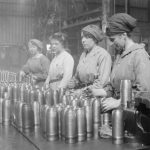 the years that followed the war, from exposure to the same chemicals that had killed the original 400 women.
the years that followed the war, from exposure to the same chemicals that had killed the original 400 women.
As if the dangerous working conditions weren’t enough, women were also paid significantly less than men in comparable positions. In 1918, women workers on London’s buses, trams, and subways organized a strike and managed to win equal pay for equal work. When the war ended, many women were fired to free up jobs for returning veterans. Some thanks that was. I’m sure many of the women were glad to go back to their prior jobs, or go home to take care of their families, but to be fired” was just wrong in every way. Nevertheless, in return for their hard work, these women were fired so that the returning men could have a job again.

 I’m not usually one to go and watch bowling, because after bowling for so many years, watching is normally not as much fun as bowling too. Nevertheless, last night I did go and watch my daughter Amy Royce and her family, bowl on their Tuesday night bowling league in Ferndale, Washington. My husband, Bob and I are visiting their family for the Thanksgiving holiday, and when they lived in Casper, Amy bowled on our Monday night league with us. Her daughter, Shai substituted on the league too. When she moved to Washington, she almost thought she wouldn’t bowl much anymore, but then her husband, Travis told her they should bowl. The perfect idea, developed into a family team. The kids hadn’t been bowling very long, especially their son, Caalab, so the scores started out somewhat low, but practice makes perfect…or at least better, and the scores have improved quite a bit, especially when Caalab started to throw a curve ball, the same way his dad does. It is a more unusual style, and pretty much one only a man could do, I think, because they throw without using the thumb hole. This style puts a large amount of spin on the ball, and therefore a big curve. It takes some getting used to…for most people anyway, but Caalab took to it right away, and now it’s like he has been bowling that way all his life.
I’m not usually one to go and watch bowling, because after bowling for so many years, watching is normally not as much fun as bowling too. Nevertheless, last night I did go and watch my daughter Amy Royce and her family, bowl on their Tuesday night bowling league in Ferndale, Washington. My husband, Bob and I are visiting their family for the Thanksgiving holiday, and when they lived in Casper, Amy bowled on our Monday night league with us. Her daughter, Shai substituted on the league too. When she moved to Washington, she almost thought she wouldn’t bowl much anymore, but then her husband, Travis told her they should bowl. The perfect idea, developed into a family team. The kids hadn’t been bowling very long, especially their son, Caalab, so the scores started out somewhat low, but practice makes perfect…or at least better, and the scores have improved quite a bit, especially when Caalab started to throw a curve ball, the same way his dad does. It is a more unusual style, and pretty much one only a man could do, I think, because they throw without using the thumb hole. This style puts a large amount of spin on the ball, and therefore a big curve. It takes some getting used to…for most people anyway, but Caalab took to it right away, and now it’s like he has been bowling that way all his life.
Amy has struggled a little bit this year, because while she has been bowling since she was 6 years old, she had always bowled in a dryer climate, and now she is bowling in a humid climate. Now, for those who don’t know, the lanes do react differently in humid climates than in dry climates. Amy has had to adjust her starting position quite a bit, and struggles with her spares. She was hoping that I could help her some, because I was her coach when she first learned to bowl. I don’t know if I helped her much, because there wasn’t that much time in the evening, but her scores improved some after we started. I’m not too concerned, because Amy is a good bowler, and while it may take a little bit of time, she will get it figured out.
As the evening went on Amy’s family kept making a sign, with a verbalized addition to it, and I wondered what 
 that was all about. Then, she told us. The two spread, bent fingers with the hissing sound addition is the sign for a cobra…yes, that’s right…the snake. Now, I suppose you might think that is about being vicious while bowling. At first, I thought it was a sign of irritation, but it wasn’t. In reality the cobra has a very different meaning to them. It is their team name. Still odd, you might think, but it really isn’t. For them it is about what a cobra does…it strikes!! Yes, that is a perfect way to inspire each other, and in this case, the perfect team name…The Cobras. Amy wasn’t sure she liked it, but I love it!!
that was all about. Then, she told us. The two spread, bent fingers with the hissing sound addition is the sign for a cobra…yes, that’s right…the snake. Now, I suppose you might think that is about being vicious while bowling. At first, I thought it was a sign of irritation, but it wasn’t. In reality the cobra has a very different meaning to them. It is their team name. Still odd, you might think, but it really isn’t. For them it is about what a cobra does…it strikes!! Yes, that is a perfect way to inspire each other, and in this case, the perfect team name…The Cobras. Amy wasn’t sure she liked it, but I love it!!
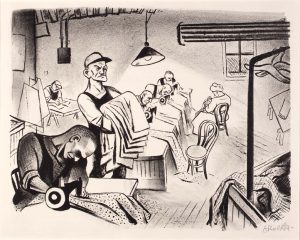 In a day and age when we see protests so often that we often pay very little attention, it’s easy to think that the protestors are just being ridiculous, and sometimes they are. That makes it easy to overlook the situations that really should be protested, or at least greeted with outrage. I suppose that every issue that is protested has its outrage, and sometimes the only way to get the attention an issue needs is to walk out and protest. Sometimes protests are simply the last resort.
In a day and age when we see protests so often that we often pay very little attention, it’s easy to think that the protestors are just being ridiculous, and sometimes they are. That makes it easy to overlook the situations that really should be protested, or at least greeted with outrage. I suppose that every issue that is protested has its outrage, and sometimes the only way to get the attention an issue needs is to walk out and protest. Sometimes protests are simply the last resort.
On this day, September 4, 1894, 12,000 tailors embarked on a strike to fight against the “sweatshop” system that exploited their labor. The tailors demanded that they be given a 10 hour work day, with an hour off for lunch. They wanted a weekly minimum wage and a weekly pay day. The “Protective Association” of cloakmaker manufacturers as well as important clothing dealers, “declared that they considered the demands of the men right, that no business which could not pay the workers the minimum wages asked ought to exist,” while “the 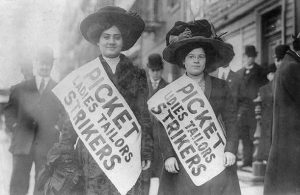 press and the public have also heartily sustained these demands, so that there can be no doubt that the public will pay, if necessary, the increased prices for the clothing rendered necessary.” While all that sounded good, the strike would continue through much of the fall. The striking workers said that the had to live half a year on what they could save out of the meager $4 per week they earned during the other half of the year. The year 1894 was a year of economic depression and widespread labor unrest. The strikes included the Pullman Strike, which paralyzed the railroads, and made Eugene Victor Debs America’s most important labor leader.
press and the public have also heartily sustained these demands, so that there can be no doubt that the public will pay, if necessary, the increased prices for the clothing rendered necessary.” While all that sounded good, the strike would continue through much of the fall. The striking workers said that the had to live half a year on what they could save out of the meager $4 per week they earned during the other half of the year. The year 1894 was a year of economic depression and widespread labor unrest. The strikes included the Pullman Strike, which paralyzed the railroads, and made Eugene Victor Debs America’s most important labor leader.
Labor conditions were atrocious in many cases, and the laborers often had little recourse. The big business owners had the control, and the laborers were at their mercy. If they wanted a job, they were to “shut up and do their job” or they wouldn’t have one. Many times these laborers had limited education, and so few options. 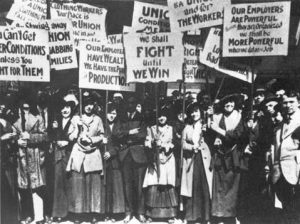 They also had families to support. Their wages were their lifeline, so they worked and worked, hoping that somehow they might create a better life for themselves and their families. These people were willing to work. All they asked for was a fair shake. Finally, they got to a point where they knew that they weren’t going to get that fair shake and they were left with no other options but to strike. It’s sad that it had to come to that point, but sometimes the strike and protest is all you have. There were other protests within the tailor industry, and many other industries too. Each one probably improved a few things, and eventually conditions got better. Of course, there will always be things to protest and people who will do so.
They also had families to support. Their wages were their lifeline, so they worked and worked, hoping that somehow they might create a better life for themselves and their families. These people were willing to work. All they asked for was a fair shake. Finally, they got to a point where they knew that they weren’t going to get that fair shake and they were left with no other options but to strike. It’s sad that it had to come to that point, but sometimes the strike and protest is all you have. There were other protests within the tailor industry, and many other industries too. Each one probably improved a few things, and eventually conditions got better. Of course, there will always be things to protest and people who will do so.
 When an injury occurs, such as a broken bone, most often you are unable to participate in your normal sports activities. My case was no different. On October 18, 2015, I broke my shoulder in a fall, while hiking the Bridle Trail on Casper Mountain. It was a break that required surgery to repair, and of course, the healing of the broken bone was followed by physical therapy, which I continue to do. My case has been considered unusual, in that a break that is supposed to be among the most painful, has not been extremely painful to me. I don’t know if I just have a high tolerance for pain, if my surgeon just did an amazing job, or if my break, which twisted the ball of my shoulder joint a quarter turn, was not as bad as they thought…an unlikely scenario, I think. My guess is that I have a high tolerance for pain, because my surgeon is surprised that I’m not hurting more than I am. Physical therapy is an amazing journey in its own right, and I continue to get closer and closer to full restoration every day.
When an injury occurs, such as a broken bone, most often you are unable to participate in your normal sports activities. My case was no different. On October 18, 2015, I broke my shoulder in a fall, while hiking the Bridle Trail on Casper Mountain. It was a break that required surgery to repair, and of course, the healing of the broken bone was followed by physical therapy, which I continue to do. My case has been considered unusual, in that a break that is supposed to be among the most painful, has not been extremely painful to me. I don’t know if I just have a high tolerance for pain, if my surgeon just did an amazing job, or if my break, which twisted the ball of my shoulder joint a quarter turn, was not as bad as they thought…an unlikely scenario, I think. My guess is that I have a high tolerance for pain, because my surgeon is surprised that I’m not hurting more than I am. Physical therapy is an amazing journey in its own right, and I continue to get closer and closer to full restoration every day.
My healing process is going well, and today I received the go ahead To begin bowling again. I am excited about getting back to normal, but I must say that taking up bowling again will not be done without a degree of apprehension. Remember, it was a fall that broke my shoulder in the first place, and I slide about half of the approach. Needless to say, that is going to feel like a long distance to someone who has missed almost three months of the bowling season. Nevertheless, I will take up bowling again, because I refuse to let fear or apprehension beat me. I don’t necessarily expect to bowl great, but it will be great to take that next step back to my normal life.
Many times, an accident can mean the end of that and many other activities, but I refuse to quit, and I have no immediate plans to modify my bowling style.  I have bowled this way for 30 years, after all. Still, my stubbornness will most likely carry me through. My husband, Bob thinks I should try a couple of shots before I decide, and I think that’s a good idea, because it has been three months. So, I have thrown that first ball, and I must admit that I was literally shaking. I felt like a baby trying to take those first steps away from a table, although I can’t say that I recall if I was shaking with those first steps. As my game has proceeded, I find myself with two spares and three strikes in six frames, and the shaking has stopped. I guess you might say that I’m back. I’m sure my left arm has a ways to go yet, but I am on my way to full restoration, and with a 178 my first game, I can honestly say that it’s good to be back!!
I have bowled this way for 30 years, after all. Still, my stubbornness will most likely carry me through. My husband, Bob thinks I should try a couple of shots before I decide, and I think that’s a good idea, because it has been three months. So, I have thrown that first ball, and I must admit that I was literally shaking. I felt like a baby trying to take those first steps away from a table, although I can’t say that I recall if I was shaking with those first steps. As my game has proceeded, I find myself with two spares and three strikes in six frames, and the shaking has stopped. I guess you might say that I’m back. I’m sure my left arm has a ways to go yet, but I am on my way to full restoration, and with a 178 my first game, I can honestly say that it’s good to be back!!
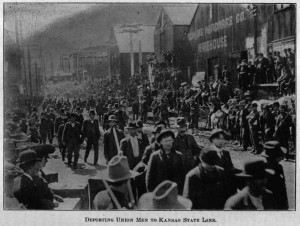 I think a lot of people know or at least have heard of Cripple Creek, Colorado. Most people think of the fourteen casinos located there, and I suppose that casinos are a fitting thing for Cripple Creek to be known for, but it wasn’t always that way. Cripple Creek became a gold mining boom town in 1894 after gold was discovered there. At that time 150 gold mines suddenly sprang up, and with them, a strong miners union…the Free Coinage Union Number 19, which was a part of the militant Western Federation of Miners.
I think a lot of people know or at least have heard of Cripple Creek, Colorado. Most people think of the fourteen casinos located there, and I suppose that casinos are a fitting thing for Cripple Creek to be known for, but it wasn’t always that way. Cripple Creek became a gold mining boom town in 1894 after gold was discovered there. At that time 150 gold mines suddenly sprang up, and with them, a strong miners union…the Free Coinage Union Number 19, which was a part of the militant Western Federation of Miners.
As with any gold mining operation, desparate workers began pouring in from all over the country. Before long Cripple Creek had a huge labor surplus. With the labor surplus, the owners begin requiring extra hours, with no pay increase, or the alternative, they could keep the current 8 hours a day with a pay reduction of 50 cents. The Western Federation of Miners opposed both plans, and the miners when on strike. Their picket lines and refusal to work closed most of the mines. They showed what solidarity is all about. The miners who were still going down in the 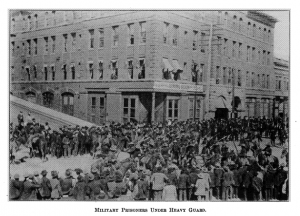 working mines assessed themselves 10 percent of their wages to support the strikers, and the union set up soup kitchens. How often to you see people who can’t afford to strike, but who are willing to support those who do strike.
working mines assessed themselves 10 percent of their wages to support the strikers, and the union set up soup kitchens. How often to you see people who can’t afford to strike, but who are willing to support those who do strike.
The governer of Colorado, David Waite would not help the labor bosses, but they had the county Sheriff, Frank Bowers in their pocket. They told the miners to go back to work, they would not. By the end of October, things had gotten so out of hand that finally, on November 23, 1903, Governor Peabody agreed to send the state miltia to protect replacement workers that the bosses had brought in. The striking miners were furious and they barricaded the roads and railways. The soldiers began rounding up the union members and their sympathizers, including the entire staff of a pro-union newspaper, and imprisoned them without charges or any evidence that they had done anything wrong.
The miners and others who were imprisoned complained that their constitutional rights had been violated, and 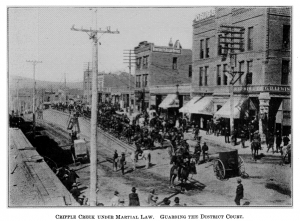
one anti-union judge replied, “To hell with the Constitution; we’re not following the Constitution!” Those tactics brought out the more radical elements of the Western Federation of Miners, and in June of 1904 Harry Orchard, who was a professional terrorist the the union employed, blew up a railroad station, whick killed 13 strikebreakers. With the bombing came the outrage of the public and the deportation of the Western Federation of Miners leaders. By midsummer, the strike was over and the Western Federation of Miners never regained the same level of power it had originally had in the Colorado mining districts. Even in this day and age, the unions and the bosses seem to always be at odds, and I suppose that something like this could happen again.

